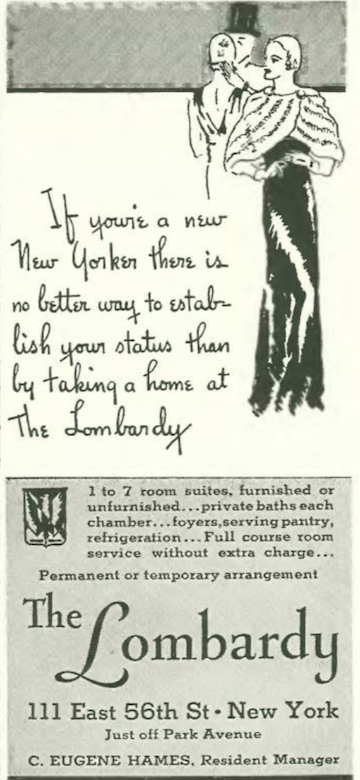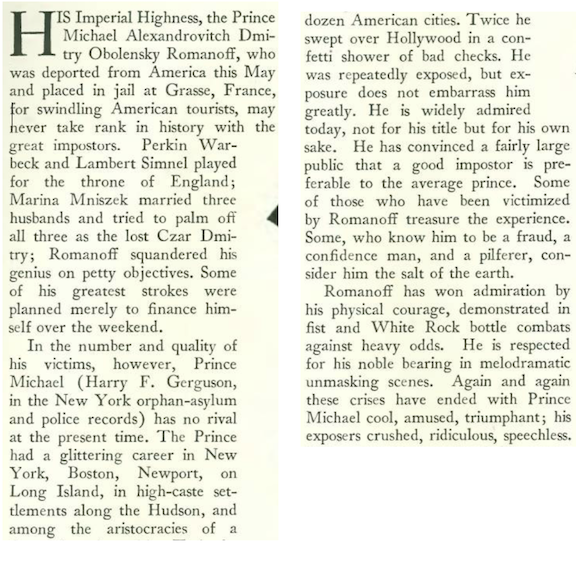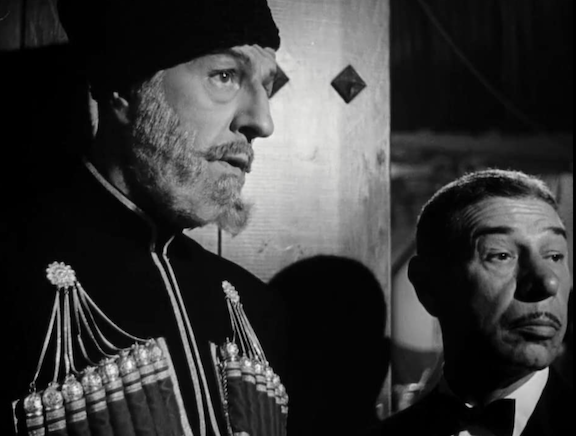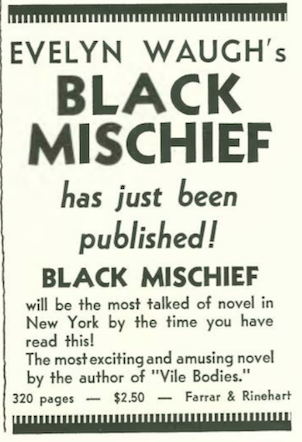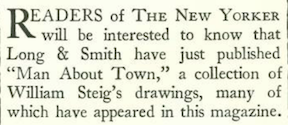Good cheer was in short supply during the worst year of the Depression, but as 1933 approached many New Yorkers could at least look forward to legal beer in the New Year.

But as with all things political, new rules and regulations would need to be hashed out before the taps could flow, and both brewers and beer drinkers would have to recalibrate a relationship that had been suspended for nearly 13 years. Alva Johnston gave this (excerpted) report in “A Reporter at Large”…

* * *
National Treasure
Chester Dale (1883–1962) began his career in finance at age fifteen, working as a runner for the New York Stock Exchange. Just twelve years later he would marry painter and art critic Maud Murray Dale, and together they would amass an art collection that would include significant works by Claude Monet, Paul Cézanne, Amedeo Modigliani, Henri Matisse and Pablo Picasso. In 1932 the Dales were well on their way to building a collection that would eventually end up in the National Gallery of Art in Washington, D.C. “The Talk of the Town” featured the Dales in this except:


* * *
Smoke Screen
E.B. White noted the historic meeting of outgoing U.S. President Herbert Hoover and his successor, Franklin D. Roosevelt. White speculated on at least one topic of discussion:

* * *
No Longer “It”
Here is how IMDB describes the 1932 pre-Code drama Call Her Savage: “Sexy Texas gal storms her way through life, brawling and boozing until her luck runs out, forcing her to learn the errors of her ways.” The actress who portrayed that “Texas Gal,” Clara Bow, was getting sick of Hollywood and would make just one more film before retiring at age 28. Although in some circles the silent era’s “It Girl” sex symbol was finally beginning to earn some credit as an “artiste,” critic John Mosher was reserving judgment:

* * *
From Our Advertisers
Is this really how the smart set lived in 1932 Manhattan? Here we have an old toff dressed like Santa (in a top hat) sneaking presents onto the Christmas tree…and caught in the act by, I presume, his wife and a chambermaid?…
…in sharp contrast, here is an ad from the Golden Rule Foundation, which annually designated the second week in December as “Golden Rule Week”…the foundation raised funds to help needy children throughout the world…
…and here’s a bright, back cover ad from Caron Paris…apparently the face powder industry had been good to them in 1932…
…on to our cartoons, we start with a smoking tutorial from William Steig…
…some sunny optimism from one of Helen Hokinson’s “girls”…
…in this two-pager by Garrett Price, an artist asks his patron: All right then, what was your conception of the Awakening of Intelligence through Literature and Music?…
…Isadore Klein dedicated this cartoon to the much-anticipated launch of a new literary magazine, The American Spectator (not to be confused with today’s conservative political publication by the same name) and its illustrious line-up of joint editors…
…Crawford Young’s caption recalled the precocious child in Carl Rose’s 1928 cartoon caption, a collaboration with E.B. White — “I say it’s spinach, and I say the hell with it”…
…and speaking of Carl Rose, this next cartoon by James Thurber has an interesting history…New Yorker cartoonist Michael Maslin explains in this Carl Rose Inkspill bio: In 1932, Rose submitted a drawing captioned, “Touche!” of two fencers, one of whom has just cut off the head of the other. Harold Ross (according to Thurber in The Years With Ross) thinking the Rose version “too bloody” suggested Thurber do the drawing because “Thurber’s people have no blood. You can put their heads back on and they’re as good as new”…
…as we close out December 2021 (which I am dutifully trying to do the same in 1932), we move on to the Dec. 10 issue…

…and Samuel N. Behrman’s profile (titled “Chutspo”) of comedian Eddie Cantor, who made his way from vaudeville and the Ziegfeld Follies to fame on the radio, in film and on early television. Theater great Katherine Cornell certainly appreciated Cantor’s gift for making his routine look easy: Here’s an excerpt:

* * *
Christmess
Lois Long’s “On and Off the Avenue” column was thus titled to reflect the annual challenge of buying that special something for that special someone. Here is the opening paragraph:
One of the items suggested in Long’s column was a game named for our friend Eddie Cantor called “Tell it to the Judge”…
…or you could select one of these gifts from A.G. Spaulding…my grandfather had one of those perpetual desk calendars…I would stave off boredom by endlessly flipping those numbers while the adults conversed in German…
…on to our cartoonists, James Thurber provided this nice bit of art for a two-page spread…
…Kemp Starrett gave us some biscuit (cookie) execs contemplating a new, streamlined design for their product…
…Norman Bel Geddes is perhaps best known for designing the “Futurama” display at the 1939 New York World’s Fair…here is Bel Geddes’ “Cobra Lamp”…
…George Price gave us a fellow peddling more than a simple top…
…and with Peter Arno, the party never ends…
…on to Dec. 17, 1932…

…and Arno’s ex Lois Long was back with another “Tables for Two,” still feigning the old spinster (see “shawl and slippers” reference in first graf) when in fact she was an attractive, 31-year-old divorcee who apparently still had plenty of fire for late night revelry…
According to the Jeremiah Moss blog Vanishing New York, Long was likely describing 52nd Street between Fifth and Sixth avenues that “began as a row of speakeasies, which turned into jazz clubs that then evolved into burlesque houses.” The speakeasies got their start when the city lifted residential restrictions on the brownstones and businesses moved in, including Tony’s, the Trocadero and later Place Pigalle…

…it was at the new Place Pigalle that Long enjoyed the “knockout” after-midnight show featuring ballroom dancers Frank Veloz and Yolanda Casazza and the diminutive singer Reva Reyes…

…and there was more entertainment to be had in Midtown with the upcoming opening (Dec. 27, 1932) of Radio City Music Hall, a dream project of Samuel “Roxy” Rothafel. Hugh Blake had the scoop for the New Yorker in the “A Reporter at Large” column…an excerpt:

…Radio City Music Hall was built to host stage shows only, but within a year of its opening it was converted into a movie venue…and speaking of movies, we have film critic John Mosher finally finding a movie to his liking, and a novel-to-film adaptation to boot…

…and back to the stage, Al Frueh lent his artistry to the play Dinner At Eight, which opened October 22, 1932, at the Music Box Theatre, and would close May 6, 1933, after 232 performances. The popular play had revivals in 1933, 1966 and 2002 as well as a George Cukor film adaptation in 1933 with an all-star cast.
* * *
From Our Advertisers
We begin with this helpful advice from the folks at the Lombardy…
…while we have a much less stuffy invitation from the French Line…
…the usually staid Brooks Brothers sprung for an all-color Christmas ad, featuring items that would suit any aspiring Bertie Wooster…
…and what would be the holidays without canned meat…
…and we end with James Thurber, who gets us into the proper mood for the New Year…
Next Time: Comrade Alex…



























